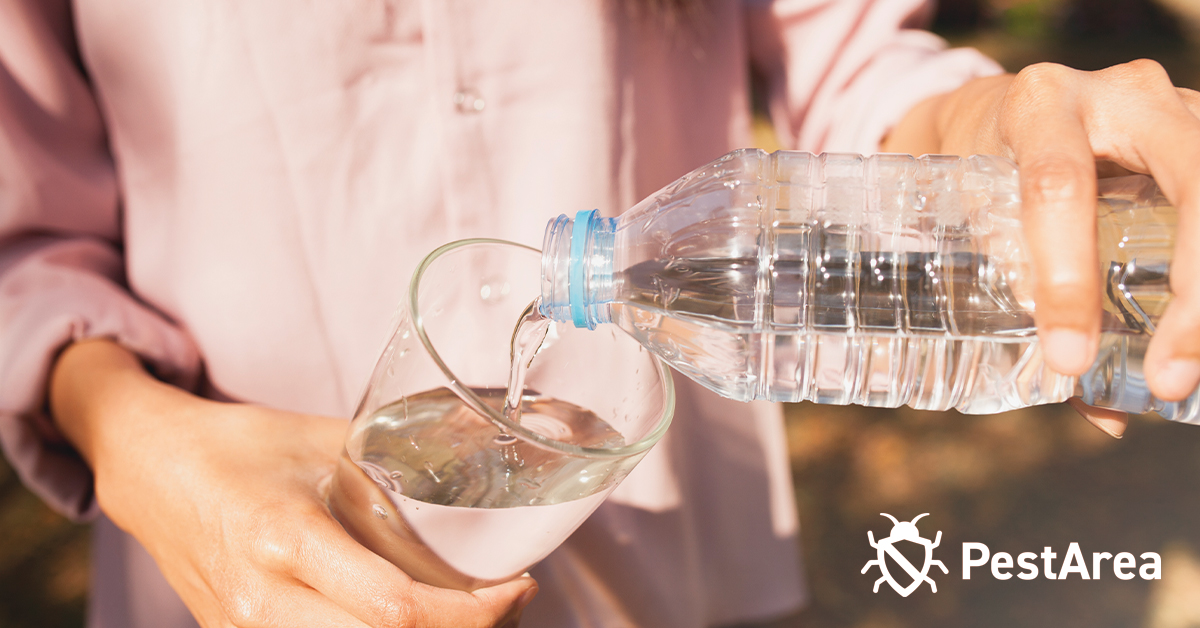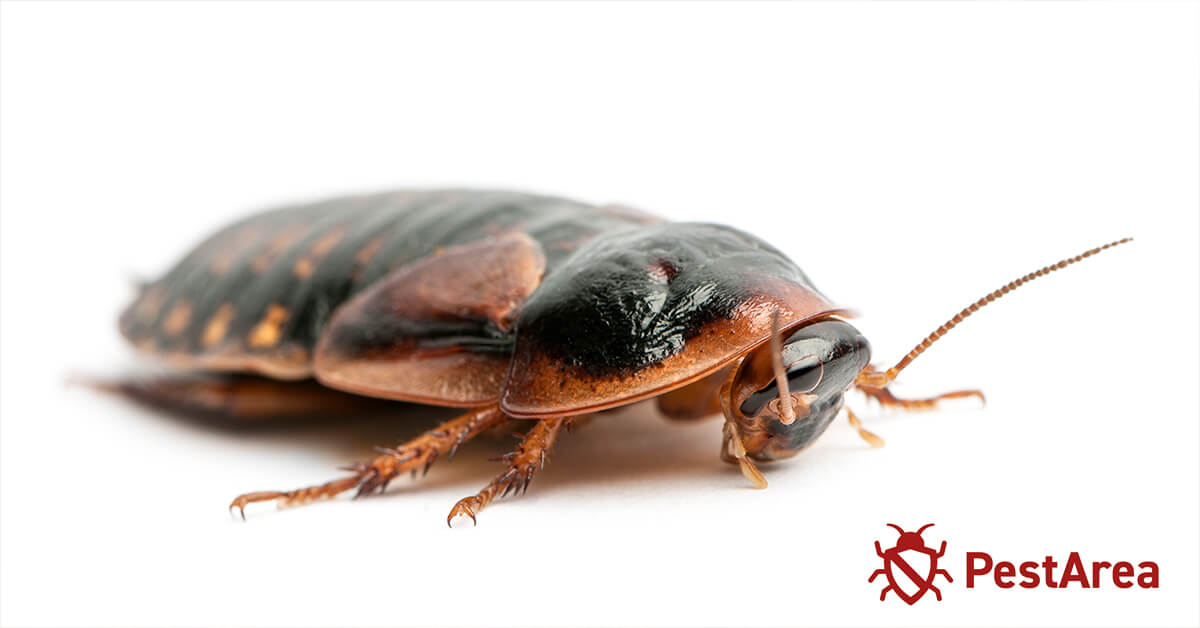
Cockroaches are super hard to kill. No matter what extermination method you try, you’ll still see one or two of them roaming around in your kitchen or bathroom. Now, what’s the first thing that comes to your mind in such a situation? Yes, turn on the water and drown the roaches.
Undoubtedly, roaches are resilient creatures, but they need oxygen to breathe. Yet, they don’t quickly die in water.
Even though these annoying creatures are bad swimmers, they still take some time to die. They can hold their breath for several minutes
under and above water. They do so by sealing their spiracles and floating to the water’s surface to get oxygen.
Roaches can die in hot and cold water, but you’ll have to submerge them fully. However, it’s not the water that kills them. Instead, high temperature is the main factor. Let’s discover more in this post.
Can Roaches Survive in Water?
No, roaches can’t survive for long in the water. They need to breathe oxygen to survive. They struggle to find fresh air when fully submerged in water. Thus, they close their spiracles and try to come to the surface for air.
Roaches don’t possess particular organs or gills for breathing underwater. So, they can’t filter oxygen from the surroundings into their bodies and eventually die.
However, things aren’t as easy as they may sound. Even after drowning the roaches in water, you will still find many of them alive. Some reasons that cause this situation include:
Spiracle Respiratory System
Roaches don’t have lungs or gills as their breathing organs. Instead, they have a spiracle respiratory system that allows them to filter oxygen in and out of their bodies.
They have multiple holes or pockets (spiracles) all over their bodies. These holes work like valves and open and close to let air in and out. That’s the entire breathing mechanism of the cockroaches.
The spiracle respiratory system even works when the roach is fully submerged in water. Roaches don’t breathe through their heads or faces like other living beings. So, even if you have drowned the cockroach in the water, it can still manage to survive.
Roaches are found to close their holes to protect themselves from danger. This is particularly the case when you use insecticides or dust over them.
In water, these pests seal their respiratory system to prevent water entry into their body. As a result, the air remains trapped inside their body, allowing roaches to float around and come to the surface.
Roaches continue doing it unless you crack their exoskeleton. When their outer structure is damaged, their spiracle respiratory system becomes dysfunctional, allowing water to enter the roach’s body.

Breath-Holding Power
Cockroaches also can hold their breath for an impressive amount of time. When underwater, they can last up to 30 minutes without breathing. On the other hand, this figure reaches 40 minutes when they are above the water.
This allows the roaches to come to the water surface or scramble out of a water pool.
Besides being resilient, roaches are also intelligent creatures that can pretend to be dead. You may think that they have died, but they are actually just lying there holding breaths. They will wait for a few seconds until you go away and then escape to a safe spot.
Impressive Climbing
You may have seen roaches struggling to climb even or smooth surfaces, but they are excellent climbers. For example, when you submerge roaches in a bowl or bucket of water, they take advantage of the traction within the bucket. As a result, they crawl or bob up to the surface quickly.
Can Cockroaches Swim?
Technically speaking, roaches can’t swim. However, some cockroach species may swim a little underwater, such as oriental cockroaches. These roaches like to be around water more than other species.
Cockroaches imitate swimming with floating. In water, they close their spiracles to hold air inside their bodies. This makes them float to the extent that they naturally bob up to the water surface.
While doing so, the roach might also paddle its legs out of fear or anxiety. This helps it reach the bucket’s edge to have some air. They can also paddle around underwater but with some restrictions.
So, roaches can’t swim, but they can find their way in the water. The two primary reasons why cockroaches can’t swim are:
Dexterous Legs
The legs of roaches help them climb on almost every surface, but their structure is unsuitable for swimming. Their legs are not strong enough to propel them in any direction. This is why you mostly see roaches paddling their legs crazily in the water and spinning in circles.
Underdeveloped Instincts
Cockroaches don’t know how to move in the water or use their legs to swim correctly. They are most likely to freeze up and stay still when submerged in water. Even if it tries to move in water, its legs don’t synchronize with each other to move in a particular direction.
Instead, it just scrambles its legs here and there in search of a direction. This results in no progress.
Do Roaches Die in Hot Water?

Roaches can die in hot water due to high heat intensity. Although these pests can tolerate extreme temperatures, they are not entirely safe from them. If they are exposed to heat measuring more than 125 degrees Fahrenheit, they will die.
A study found that low and high temperatures cause discomfort to the roaches. During the summers, cockroaches are seen to get out of the main holes. Even temperatures less than 100 degrees Fahrenheit are enough to bring them out and find cold shelters.
Boiling water has a temperature of 212 degrees Fahrenheit. If you pour sizzling boiling water on the roaches’ infestations, they are more likely to die quickly. Keep in mind to submerge the roaches in this water fully, or they would only get hurt by it.
Allow the roaches to stay in the boiling water for several minutes, so they would have no way to escape.
Can Cold Water Kill Roaches?
Unfortunately, cold water doesn’t kill roaches; it only makes them lethargic. These pests are more resilient against freezing water than boiling water.
A study from Physiological Entomology found that the alpine cockroach recovered even after staying frozen at 32 degrees Fahrenheit. However, temperatures below 32 degrees Fahrenheit caused more discomfort. Roaches died after getting frozen at 24 degrees Fahrenheit.
This means that you’ll need to freeze cockroaches in order to kill them. So, if you want to eradicate roaches by freezing them, you’ll need to set the temperature of your freezer to the lowest and then leave them there.
How Long Do Cockroaches Take to Die Without Air?
Roaches take around 30 minutes to die underwater and 40 minutes above the water. But, like every living creature, they can’t survive without air. So if they don’t get oxygen for a long time, they will eventually die.
Many people think that submerging cockroaches in water will do the job. However, as you now know, roaches have an impressive breath-holding ability that allows them to survive in water for a considerable amount of time.
Roaches don’t have a single channel for inhaling or exhaling air. Instead, they have several holes throughout their bodies that open and close, allowing roaches to inhale and exhale. They survive in water by sealing their spiracles and trapping the air inside.
Typically, the amount of time they can hold their breath varies depending on the air inside their body. In water, roaches don’t have sufficient oxygen. So, they die quicker underwater than above it.
How to Drown Roaches Correctly?
Killing roaches requires a considerable amount of time and energy. These pests can survive even the worst water temperatures and conditions due to their climbing and breath-holding abilities. So, there is no way you can kill them just by leaving them in water.
Instead, you need to:
- Submerge it in extremely hot or cold water
- Crack its exoskeleton
When the roaches’ exoskeleton is damaged, it can’t prevent the water from entering their bodies. Moreover, it couldn’t hold air inside for long. So by cracking the roach’s exoskeleton, you can also smash it.
Besides that, roaches can also become exposed to several health issues with the damaged exoskeleton. They won’t be able to revive and die one way or another.
Simply put, you can’t just submerge the cockroach in water and wait for it to die. Instead, crack its exoskeleton and then put it in super hot or freezing water for a considerable time.
Do Cockroaches Like Water or Hate It?
The most common types of home roaches, German and American species, don’t like water. They only need water to stay hydrated. However, there is a roach species that likes water, which is the Oriental cockroaches.
These species are famous for their affinity for water. You’ll find these roaches roaming freely around open water sources, like sewage plumbing and flooded basements. Oriental cockroaches can also enter your home too.
In households, they hide underneath the bathtubs, showers, puddles, or near swimming pools. They love water to the extent that most people even call them water bugs instead of Oriental cockroaches.
As much as these species like water, they can’t swim or hold their breath underwater forever. So, since they aren’t good swimmers, they will eventually die one way or another.
FAQs
How Long Can Cockroaches Last in Water?
Cockroaches can last for 30 minutes underwater and 40 minutes above the water.
Can You Kill a Cockroach With Water?
Yes, you can kill a cockroach with water by submerging it entirely in the bucket. However, the more effective way is to crack their exoskeletons and put them in boiling water for a significant amount of time.
Can Roaches Swim?
No, roaches can’t swim as they have no instinct to move their legs in one direction. Instead, their legs are dexterous, which means they aren’t strong enough to allow the roach to push itself in any direction.
The Bottom Line
Contrary to popular belief, roaches can’t really swim. Instead, they just paddle their legs here and there out of panic, which looks like they are swimming. However, roaches can survive underwater for 30 minutes and 40 minutes above water even with no instincts and nimble legs.
That’s because roaches have exceptional climbing and breath-holding capacities. Their spiracle respiratory system closes the body holes, trapping the air inside them. This helps roaches float and bob up to the water surface for air.
Although roaches may survive in water, they can’t resist extreme temperatures. Any temperature below 32 degrees Fahrenheit and above 125 degrees Fahrenheit can quickly kill roaches.
Therefore, the easiest way to kill roaches is to crack their exoskeletons and submerge them fully in boiling or freezing water. Then, wait for a significant time until they stop scrambling their legs madly.
If roaches still survive, call a professional pest exterminator to eliminate the infestation once and for all!
